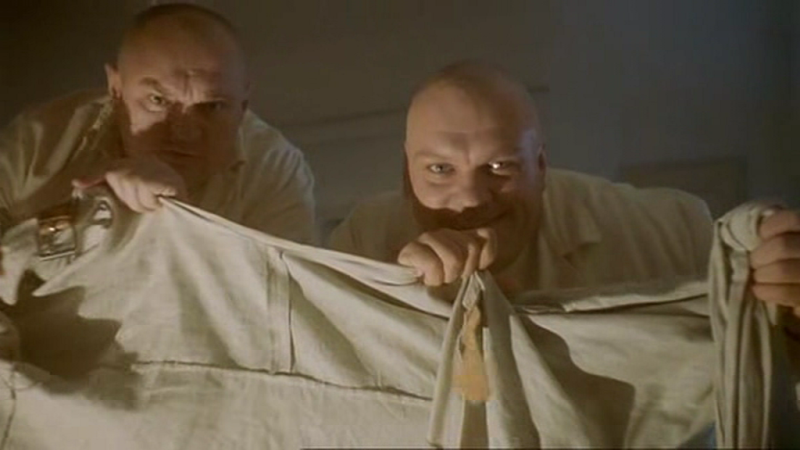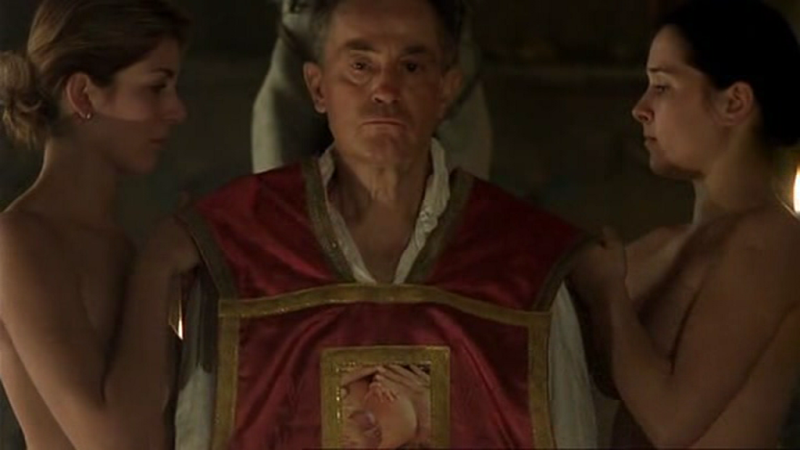
Jan Švankmajer seems to have entered that slightly awkward phase of the arthouse auteur's career where he's apt to be underappreciated. The critics have already said all the obvious things about him, he's had a few films place in pantheonic positions of a kind (Dimensions of Dialogue, Alice), and so we're ready to allow the dust to gather on his legacy. Yet the Great Man remains obstinately and inconveniently alive, and still making films.
His latest, Surviving Life (Theory and Practice), is doing the festival rounds, while its immediate predecessor, Lunacy (2005), has faded into the obscurity of the recent-but-not-current. I'm as guilty as anyone of this neglect: I didn't see Lunacy when it came out. preferring to wait for DVD release. I admit to being less than enamored with Conspirators of Pleasure (1996), although I quite liked Little Otik (2000), and even participated in a TV play somewhat influenced by it. Needless to say, Švankmajer's take on the subject was better. Much better, actually.
Even more awkward than his continued existence and productivity, is Švankmajer's artistic development: after decades of reliable consistency, the animator who happens to use flesh and bone as raw materials, some of it dead, some of it living, appears to have become interested in the more intangible aspects of his puppets: which is to say, in Lunacy, for the first time Svankmajer makes real use of his actors as actors, not merely as self-operating meat puppets. In particular, Jan Triska as the Marquis (de Sade) brings a malevolence, a twinkle, and a vulnerable humanity to this film which hasn't been seen in the Czech alchemist's movies before.

There had been signs of an interest in capturing humanity onscreen before: the little girl in Down to the Cellar (1983—when I saw this, I thought, this guy has got to make Alice) is affecting, even if she's only a symbol, and there's a shot of a baby being fished from a barrel (don't ask) in Little Otik which illustrates one advantage of live action over animation perfectly: the baby is placed on a counter and wrapped in newspaper, like a newly purchased fish, and as the paper goes on, the baby, for reasons known only to itself, and even then only fleetingly, smiles. Anything with a baby in it is a documentary, you see, because babies don't know about acting yet. If one were animating that scene, I don't think the baby would have smiled, because the animator, adult and sane, would have had to think of the idea, and who among us would?
Anyway, unlike the previous features which had used actors largely to occupy screen space where puppets would have been too expensive and time-consuming, Lunacy revels in the possibilities of unpredictable humanity let loose in an artist's cinematic canvas.
There's animation too, of course: an army of wriggling sheeps' tongues and organs, writhing steaks and swiveling eyeballs. But for the first time in a Švankmajer feature, these creations are just welcome distractions, and one doesn't really want more of them: the live-action action is diverting enough.
The movie begins with old Jan himself, padding on and warning us about what we're about to get into (and this intro must have inspired fellow animator Terry Gilliam's similar congenial warning pasted in front of 2005's Tideland, or else something very strange is afoot...). There are, we are told, two kinds of lunatic asylum: the asylum run with compassion and license, and the kind run with punishment and imprisonment. Except for the third kind, which combines the worst aspects of both: the kind we live in today.
What follows is a kind of hysterical mash-up of Poe and de Sade, in which the Divine Marquis himself invites a young man (your basic audience-substitute) to visit an asylum, where an unusually lax regime allows the inmates to entertain themselves as they please. Here, the narrative plunges into that of Poe's The System of Doctor Tarr and Professor Fether, which is handy because it prevents the Marquis making too many more speeches about the necessity for complete liberty, the sort of windy philosophizing that makes Sade so unreadable (that, and the porn). As an authentic surrealist, of course, Švankmajer has a good bit of sympathy for Sade, but he improves upon him by judicious pruning and by turning the vicious sex into bawdy slapstick.

Švankmajer also manages to improve on the model of Poe's grotesque comic yarn, for when the hero discovers the original staff of the asylum imprisoned, tarred and feathered, in the cellar, he frees them and sets loose an even more horrible nightmare than that of insane anarchy. First, there's the comedy of the feathery wardens rampaging through the hospital with cudgels raised. Rather than being actual tarry nudes, each is wearing a feathered nude-suit, complete with comically flapping, bobbing cock and balls. They look like creatures from some medieval bestiary.
It soon transpires that the director of the asylum believes in discipline, and his preferred treatment to restore the balance between body and mind is to snip bits off the body until the mind reasserts its natural supremacy. This treatment (more judicious pruning), incredible as it seems, was actually practiced in America from 1907 to 1933 by Dr. Henry Cotton, of New Jersey. Švankmajer's nightmares, by chance or design, converge directly with our reality. The filmmaker himself has no cause to be fond of state-appointed doctors: in the early seventies, he was unwittingly dosed with LSD in a military hospital, as part of some experiment whose purpose was never explained.
In Lunacy, Švankmajer has given us our anti-Caligari. The authors of that acclaimed expressionist horrorshow deplored the departure from their scenario which revealed the story to be a madman's hallucination and the sinister Caligari to be benevolent supervisor of the local loony bin. Švankmajer gives both Caligari and Poe one more vicious twist, and we end up in this worst of all possible madhouses...
***
The Forgotten is a regular Thursday column by David Cairns, author of Shadowplay.